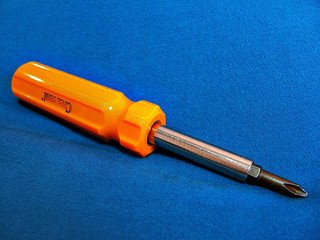A Primer on Maintenance
The reality, however, is that machines break down, parts stop working and assets reach the end of their life cycles. Unfortunately, FMs don’t have total control over these situations.
What they do have control over, though, is how long an asset lasts. They can do this by understanding the basics of both proactive (or preventive) and reactive maintenance.
Let’s take a look at the basic steps required of these maintenance strategies fo facilities managers.
Proactive (Preventive) Maintenance
When performing proactive maintenance, some of the most important things you can do are learning about an asset, training the staff on its repair and planning work and schedules carefully.
1. Understand the Facility’s Assets
An asset’s warranty and model, its parts, and factors like its purchase date and location are all important pieces of information. These details will be useful for planning what maintenance activities are needed, and when. Decide what assets will need the most attention, and create an inspection schedule based on that priority. As Buildings magazine points out, an FM can’t pay equal attention to all assets and systems.
2. Train Staff
Recording an asset’s details is only one part of the equation; training your staff on asset maintenance is another. In case reactive maintenance is necessary, each person should know the proper repair procedures. Michael Cowley of CE Maintenance Solutions recommends having one group of workers be dedicated to reactive work for a couple of weeks to a month and a half, then rotating them to planned work, while those who did planned work switch to reactive.
3. Plan Maintenance and Work Schedules
Of course, maintaining such a schedule for workers, as well as planning out routine maintenance, will require good organizational skills. FMs must find a balance between doing both of these things while also fielding regular work orders.
Reactive Maintenance
With the most successful reactive maintenance, FMs ensure that not only is the problem fixed, it does not appear again. Here, doing some careful analysis and review are important.
1. Learn the Details
Important details can get lost if you only rely on verbal communication to learn about an incident. See the asset for yourself so that you can fully understand the scope of the problem and properly resolve it. You may have knowledge of an asset’s parts or quirks that your team members don’t, so it’s important that you examine equipment with your own eyes.
2. Identify Causes
Once you’ve seen the damage for yourself, identify what factors led to the problem. Did that faulty part come from a supplier you typically don’t work with? Was the asset maintained in the proper manner? Or was the culprit something else entirely?
3. Review the Asset’s History
Looking over the asset’s history may help you answer one of the questions listed above. Specifically, it’s key to survey work order history to see if past problems could have caused the most recent hiccup, either directly or indirectly. A similar survey of past proactive maintenance would also be helpful. If repairs were not carried out properly, this may have been a causing factor.
These quick tips provide a basic outline for approaching proactive and reactive maintenance. While it’s true that many FM publications advocate for increasing the latter to decrease the former, knowing the best practices for both is never a bad thing. By committing yourself to continually learning, reviewing and planning, you can ensure your facility remains in top shape.
photo credit: baboon™ via photopin cc




